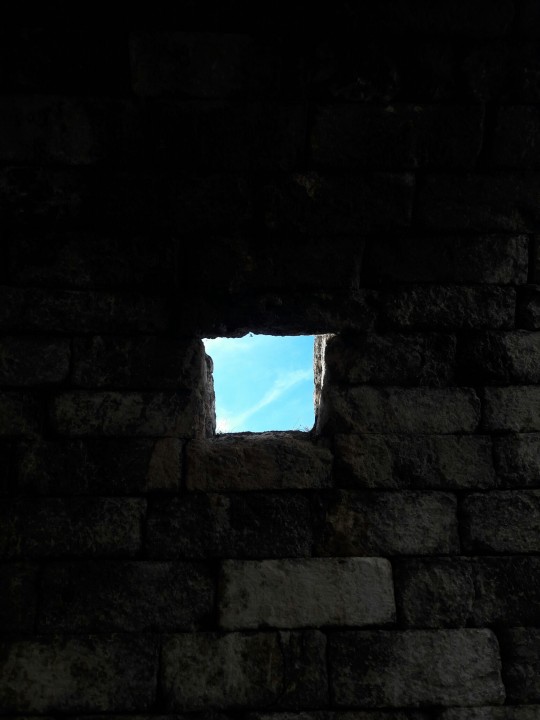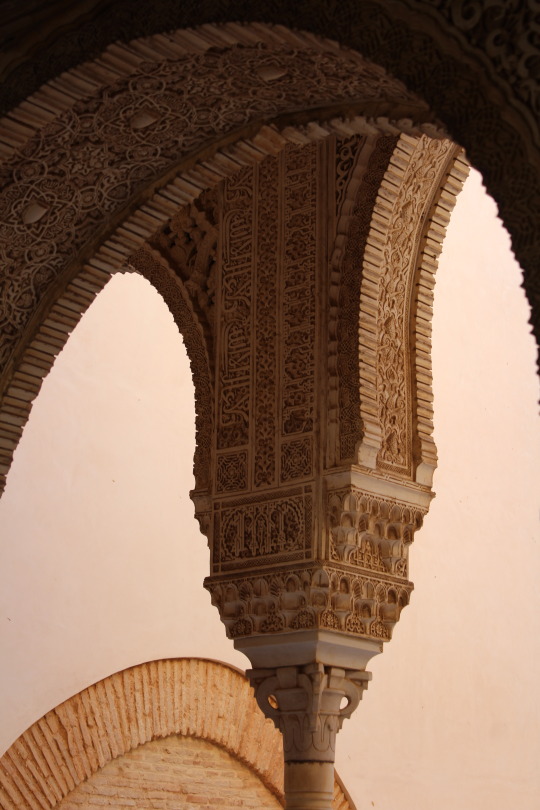Text

Queen Joanna "the Mad" of Castile watching over the casket of her dead husband Philip I of Castile.
Francisco Pradilla, 1877
36 notes
·
View notes
Photo
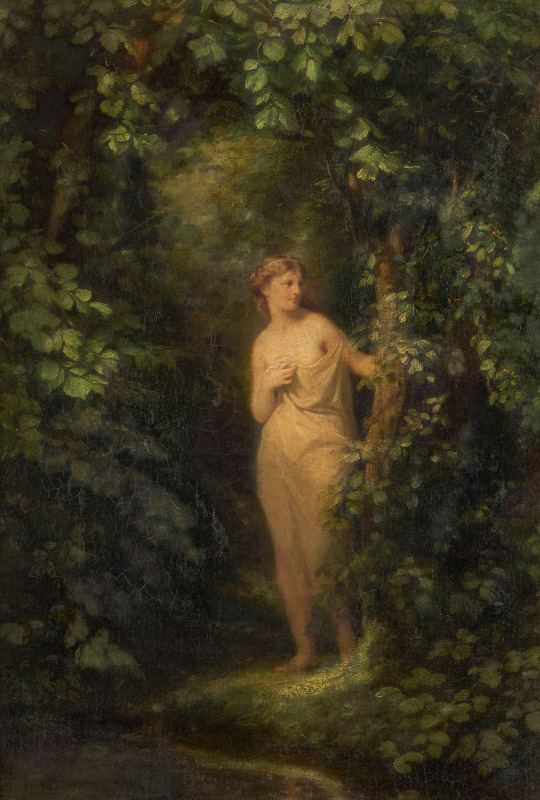
Fritz Zuber-Buhler (1822-1896), Nymph in the forest, oil on canvas, 30.5 x 22 cm. In a private collection
1K notes
·
View notes
Text
The Dark Age.
335. The forces of darkness can gain power in the world only because they have already gained power in the soul.
336. That which surrounds man is the reflection of his inner world.
337. With a pinch of salt one could say that everything maintained in the world at present is false or utterly valueless or explicitly represents some kind of dark counter-value.
339. What prevails at present is so bad that what is slightly better than this still cannot be considered good at all.
342. The present time as a modern time, that is, an antitraditional time in the extreme, is the time of negative dominances. And it holds true even on the level of the most base profanities: for example, a young and healthy man feels bad much more often than good, he is much rather depressive, sad and gloomy than luminous, happy and joyous.
344. Modernity is not a stiffened, static reality, but a dynamic process, which is continuously working to make itself darker and darker.
345. Descent is not merely a monotonous descent. Phases of sudden halts, sharp falls and slow descents are changing - but these take place in the process of a monotonous descent.
346. Exactly as in the demential phase of paralysis progressiva there are lucida intervalla, but they come about more and more rarely and are less and less luminous, in just the same way in the last phase of the Kali-yuga there can be lucida intervalla, but those who examine processes in their total coherence cannot be deceived by these.
347. Modernity is maximal just now.
348. Once darkening could be perceived in fifty or a hundred years. Now it is perceivable every five years.
350. An age, which gives much more chance for darkness than for light, is quite justly considered damned.
351. Nothing illustrates better the nature of an age than that which succeeds in it: the higher or the lower, the good or the bad, the angelic or the demonic. And today - looking at it from a »bookmaker’s« point of view - the victory of the worse is incomparably more probable than that of the better.
352. He whose aim is decline, failure and fall can be sure of his success.
353. All that is directed toward fall starts with infinitely great advantages.
355. At present darkness does not live in reservations, but is flourishing everywhere - whereas spirituality does not even live in reservations.
356. In the past five hundred years a new type of man has appeared, who rejoices if something or someone turns out to be valueless, base or non-existent. Since only a degenerated type is capable of rejoicing if the world gets poorer.
357. Most of the modern theories are false to such an extent that those views which are directly contradictory to them are false as well.
358. Most of the modern conceptions are false to such an extent that it is not enough to change a modern concept for one which is opposed to it by 180 degrees, but it has to be replaced with one that is opposed to it by 540 degrees.
359. Kali-yuga cannot leave any disciplines unturned: it is massively present in each.
361. Today’s man has gradually built a denatured world for himself: he has already been cut off from the supernatural, and now he is about to take leave of the natural.
369. Wherever man goes with his earthly tools, he always takes his earthly conditions within himself.
370. The degeneration of the power of money is now beyond the realm of money as a concrete means of payment.
371. There is only one more demonic form of payment than timewage and that is piecewage. While in the case of the former the mere quantity of time spent on working is taken into consideration, in the case of the latter it is the number of the producer’s products.
372. Although journalism is incapable even of creating dark counter-ideas, the satanic forces which operate behind journalism are already capable of it.
377. Despite all its losing track, deterioration and dissipation, today’s world and the tendencies operating in it show one direction: the direction of nothingness.
- SOLUM IPSUM: Metaphysical aphorisms, by András László.
31 notes
·
View notes
Text
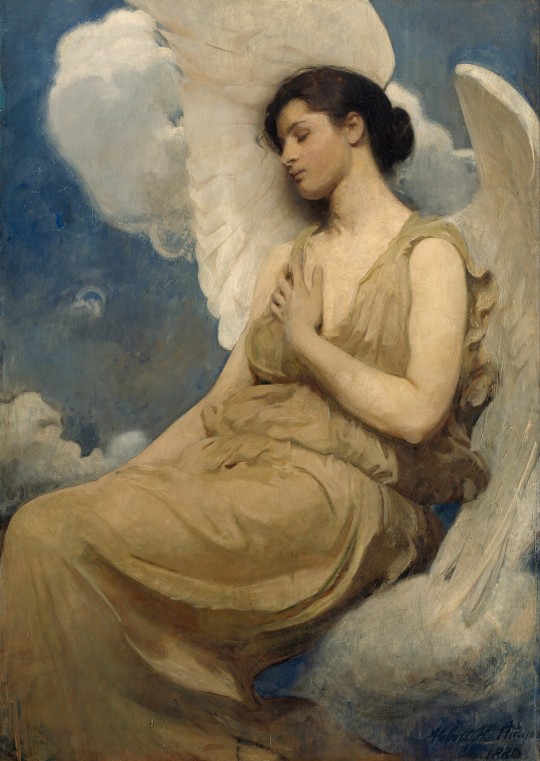
▪︎ Winged Figure.
Artist: Abbott Handerson Thayer
Place of origin: United States
Date: 1889
227 notes
·
View notes
Text
“So long has Love enchained me as his thrall,
And so accustomed to his empiry,
That, tyrannous as at first he seemed to me,
Now on my heart his rigours sweetly fall.
So, when by him my better parts are all
Thrown down, and seems as every power would flee,
Even then so great my soul's sweet ecstasy,
My trembling cheeks grow pale as funeral-pall.
Then Love within me gathers might apace,
Making my sighs in words proclaim their woe,
And calling on my lady forth they go,
Entreating her to take me to her grace:
Thus still it chances, when she looks on me,
And none might deem how humbled then I be.”
—The Vita Nuova or The New Life of Dante, tr. Sir Theodore Martin, 2nd edt., William Blackwood and Sons, mdccclxxi, p. 58.
0 notes
Photo
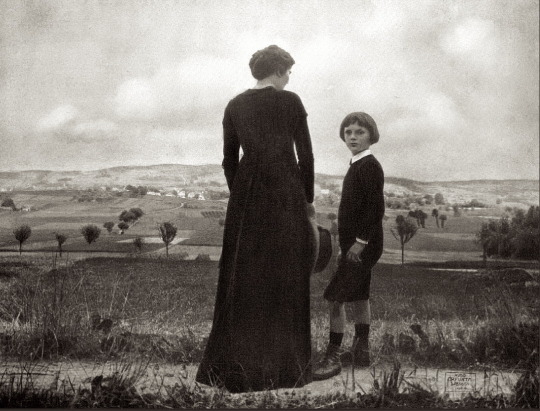
Mother and son in German landscape, ca.1904 - by Hugo Erfurth (1874 - 1948), German
177 notes
·
View notes
Text
“The feeling of repose and renewal that I had in this tower [the place that Jung built for himself and by himself] was intense from the start. It represented for me the maternal hearth. But I became increasingly aware that it did not yet express everything that needed saying, that something was still lacking. And so, four years later, in 1927, the central structure was added, with a tower-like annex.
After some time had passed—again the interval was four years—I once more had a feeling of incompleteness. The building still seemed too primitive to me, and so in 1931 the tower-like annex was extended. I wanted a room in this tower where I could exist for myself alone. I had in mind what I had seen in Indian houses, in which there is usually an area—though it may be only a corner of a room separated off by a curtain—to which the inhabitants can withdraw. There they meditate for perhaps a quarter or half an hour, or do Yoga exercises. Such an area of retirement is essential in India, where people live crowded very close together.
In my retiring room I am by myself. I keep the key with me all the time; no one else is allowed in there except with my permission. In the course of the years I have done paintings on the walls, and so have expressed all those things which have carried me out of time into seclusion, out of the present into timelessness. Thus the second tower became for me a place of spiritual concentration.
In 1935, the desire arose in me for a piece of fenced-in land. I needed a larger space that would stand open to the sky and to nature. And so—once again after an interval of four years—I added a courtyard and a loggia by the lake, which formed a fourth element that was separated from the unitary threeness of the house. Thus a quaternity had arisen, four different parts of the building, and, moreover, in the course of twelve years.
After my wife’s death in 1955, I felt an inner obligation to become what I myself am. To put it in the language of the Bollingen house, I suddenly realized that the small central section which crouched so low, so hidden, was myself! I could no longer hide myself behind the “maternal” and the “spiritual” towers. So, in that same year, I added an upper story to this section, which represents myself, or my ego-personality. Earlier, I would not have been able to do this; I would have regarded it as presumptuous self-emphasis. Now it signified an extension of consciousness achieved in old age. With that the building was complete. I had started the first tower in 1923, two months after the death of my mother. These two dates are meaningful because the Tower, as we shall see, is connected with the dead.
From the beginning I felt the Tower as in some way a place of maturation—a maternal womb or a maternal figure in which I could become what I was, what I am and will be. It gave me a feeling as if I were being reborn in stone. It is thus a concretization of the individuation process, a memorial aere perennius. During the building work, of course, I never considered these matters. I built the house in sections, always following the concrete needs of the moment. It might also be said that I built it in a kind of dream. Only afterward did I see how all the parts fitted together and that a meaningful form had resulted: a symbol of psychic wholeness.
At Bollingen I am in the midst of my true life, I am most deeply myself. Here I am, as it were, the “age-old son of the mother.” That is how alchemy puts it, very wisely, for the “old man,” the “ancient,” whom I had already experienced as a child, is personality No. 2*, who has always been and always will be. He exists outside time and is the son of the maternal unconscious. In my fantasies he took the form of Philemon, and he comes to life again at Bollingen.
At times I feel as if I am spread out over the landscape and inside things, and am myself living in every tree, in the plashing of the waves, in the clouds and the animals that come and go, in the procession of the seasons. There is nothing in the Tower that has not grown into its own form over the decades, nothing with which I am not linked. Here everything has its history, and mine; here is space for the spaceless kingdom of the world’s and the psyche’s hinterland.
I have done without electricity, and tend the fireplace and stove myself. Evenings, I light the old lamps. There is no running water, and I pump the water from the well. I chop the wood and cook the food. These simple acts make man simple; and how difficult it is to be simple!
In Bollingen, silence surrounds me almost audibly, and I live “in modest harmony with nature.” Thoughts rise to the surface which reach back into the centuries, and accordingly anticipate a remote future. Here the torment of creation is lessened; creativity and play are close together.”
—Carl G. Jung, Memories, Dreams, Reflections; VIII, The Tower, trans. Richard and Clara Winston, (1989, Vintage.)
*Jung used to have a sense of duality that took the form of two alternating personalities: NO. 1 and 2, the latter is where he pursued religious reflections in solitude, in a state of communion with nature and the cosmos.

10 notes
·
View notes
Text
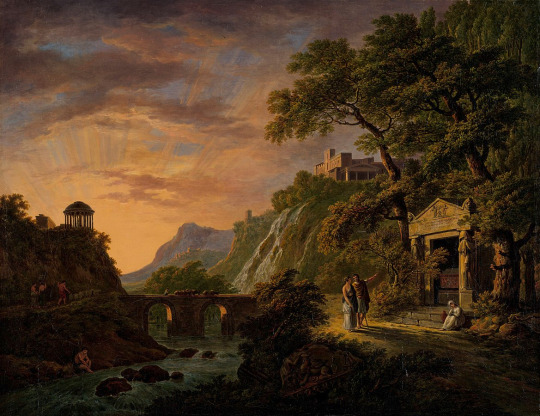
Daniël Dupré (1751-1817)
"Arcadian Landscape with Setting Sun" (1792-1809)
Oil on canvas
Located in the Rijksmuseum, Amsterdam, Netherlands
249 notes
·
View notes
Text
Indeed, all joys aspire to æternitātem, even if in vain.
“All joy wants the eternity of all things!”
—F. Nietzsche, Thus Spoke Zarathustra: Part Four, “The Drunken Song,” §11 (excerpt).
86 notes
·
View notes
Photo


Exhibition quality German hunting knife with chiseled silver mountings and sheath, stag handle. Late 19th or early 20th century.
from Rock Island Auctions
94K notes
·
View notes
Photo

Arthurian Scene.c.1920.
Mixed media with colored pencil, watercolor, and wash on board.
33 x 21.6 cm. (12.99 x 8.26 in.)
Art by Alice Barber Stephens.
1K notes
·
View notes
Text
“Les peuples toujours idolâtrent la merde, que ce soit en musique, en peinture, en phrases, à la guerre ou sur les tréteaux. L'imposture est la déesse des foules.”
— Louis-Ferdinand Céline
79 notes
·
View notes





